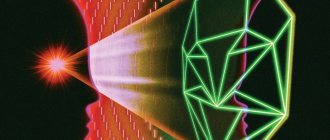The study of the human psyche has intrigued society for hundreds of years. However, most people still cannot find an answer to many questions about their personality. Detailed psychoanalysis can shed light on some of them. How does it work, what is its history? What makes us make the same mistakes? How can childhood events influence our present? You will find the answers in the article.
What is psychoanalysis
Psychoanalysis
is a theory founded by Sigmund Freud, as well as a method for eliminating psychological problems.
When developing the theory, the famous Austrian psychotherapist used many years of experience gained during his medical practice.
So, what do the basic principles of psychoanalysis say?
:
- Conflicts between the conscious and unconscious can lead to neuroses, fears, depression and other mental disorders.
- A person’s experience, knowledge and behavior are formed on the basis of his irrational unconscious drives.
- An individual trying to realize these drives “turns on” defense mechanisms that interfere with the process of awareness.
- The influence of the unconscious can be neutralized through its awareness. Psychoanalysis is a therapy that involves solving a problem.
The key idea of psychoanalysis comes down to the statement that a person is not aware of his own motives for behavior - they need interpretation. According to Freud's classical psychoanalysis, the patient should voice all his thoughts, associations, and dreams. The task of a psychoanalyst is to analyze what he hears.
The emergence of psychoanalysis
The philosophy of psychoanalysis had an invaluable influence on the development of philosophical science, as well as on the spiritual culture of society. The founder of psychoanalysis was the Austrian psychiatrist S. Freud, who created, first of all, a method of treating patients. On its basis, the concept of philosophical views on the essence of man and culture was formed.
S. Freud and his followers - G. Jung, K. Horney, E. Fromm - are practicing doctors who pursue the goals of curing patients and understand that the philosophy of psychoanalysis is much more extensive than medical practice, and with its help it is possible to create new treatment methods. It was psychoanalysis that gave impetus to the formation of new concepts and views on philosophical issues, such as the philosophy of anthropology, life, and culture. Its peculiarity lay in its focus exclusively on man, his psyche, and problems.
History of psychoanalysis
The history of psychoanalysis dates back to 1880, in the days when the Viennese physician J. Breuer shared with his comrade S. Freud a remarkable story about a patient who was cured of the symptoms of hysteria after a hypnosis session. At the reception, she was able to voice a deeply traumatic event that happened to her. The result was a strong emotional reaction. Catharsis resulted in a significant reduction in symptoms. When the patient emerged from the hypnosis state, she had no memory of her confessions.
Freud decided to apply the technique with his patients - Breuer's results were confirmed. The partners shared their findings in a joint publication, Research on Hysteria, arguing that the symptoms of hysteria are caused by repressed memories of traumatic events. The difficult situation is repressed from consciousness, but continues to influence the patient.
Personal reasons prompted Breuer to withdraw from research and Freud began independent work. He was able to discover that a similar result is achieved not only with hysteria, but also with obsessive states of a sexual nature, often arising in childhood.
The psychoanalyst initially considered the Oedipus complex to be the key cause of neuroses. The symptom begins to form at moments when the child’s unconscious drives threaten to break through the barrier set by repression, which turns out to be unacceptable for other parts of the psyche due to fear of punishment and for moral reasons.
Basics of psychoanalysis
Psychoanalysis is a therapy based on several immutable principles
:
- First of all, the principle of determinism is implied. According to the ideas of psychoanalysis, not a single manifestation of the psyche can be called random, unrelated to anything, or involuntary. Conscious feelings, thoughts, impulses should be considered as events of cause-and-effect interactions determined by early childhood experience. Special research methods (mainly through dream analysis and associations) reveal the connection between situations from the past and current psychological experience.
- The basis of the second principle was the topographical approach. All mental elements are assessed according to the criteria of their accessibility. Repression, which ensures the removal of certain psychological elements from consciousness, indicates that a certain part of the psyche is making efforts without wanting to realize them.
- The third dynamic principle is based on the theory that the psyche is driven to action by impulses of aggression and sexuality, which are elements of a common biological heritage. They have significant differences from the instinctive behavior of animals. In the animal world, a stereotypical response is usually recorded, provoked by special stimuli in certain situations and aimed at survival. Psychoanalysis considers attraction as a state of nervous excitement, which is a response to stimuli that direct the psyche to action and relieve tension.
- The fourth principle is the genetic approach. The personality traits of an adult, characterizing his conflicts and neurotic symptoms, are generally associated with the fantasies and desires of childhood. It is believed that no matter what paths open to a person, he will not be able to escape from his own childhood experiences - in any case, they will haunt him throughout his life.
What are archetypes
The collective unconscious makes up archetypes - universal basic innate structures, they are the cause of experiences of events from the ancient history of the origin of humanity, which can appear to a person in dreams and be the cause of unrest and mental disorders, they are the environment from which a person’s spiritual life and the entire culture are formed humanity.
The definitions of most archetypes have become common nouns and entered people’s everyday lives, like sayings, for example:
- A mask is a person’s face, which he “pulls on” during any contact with strangers, as well as at official meetings;
- The shadow is the second face of a person, which consists of vicious character traits or unacceptable qualities repressed into the subconscious.
Of great importance for a person, according to Jung, is the archetype “My True Self” or “Self,” which is a synthesis of all archetypes. A person must comprehend this “I” throughout his life. The first results of this development, according to Jung, appear no earlier than middle age.
At this time, a person already has sufficient life experience. This also requires a mandatory high level of intelligence development and persistent work on oneself. Only by reaching the cherished peak can a person be fully realized and understand the “incomprehensible” that is closed to mere mortals. Only a few will know it; most will not.
Methods of psychoanalysis
Let us consider in detail the main methods used in the field of psychoanalysis: the method of dream interpretation, the method of free association, the method of interpretation. Let's describe each one separately.
Free association method
What is this famous method based on? On the use of the phenomenon of associative thinking in order to study deep mental phenomena and processes (often they are unconscious). The data obtained are used for the treatment and correction of functional mental disorders, with the help of the patient’s awareness of the nature and source of the problems.
What is special about the free association method? In a conscious joint and purposeful confrontation between the therapist and the patient with a state of psychological discomfort. Acting together, the psychoanalyst and the patient cope with the problem.
The method of free association can be called a method for studying the mental state of a patient. He talks about any thoughts that come into his head, no matter how absurd or inappropriate they may seem. They may sound fantastic, ordinary, obscene. The therapist has to draw a conclusion from these revelations or incoherent fragments of thoughts.
In the “Dictionary of Psychoanalysis” (J.B. Pontalis, J. Laplanche) it is noted that free associations can be called the expression of all indiscriminately ideas and thoughts that arise in the mind - spontaneously or starting from any element (number, word, image from a dream).
Freud called for abandoning the role of controlled consciousness, beginning to understand mental processes. He stated that consciousness tries to eliminate images and thoughts that appear on the periphery before the attention of the analyzing object is focused on them. Moreover, when analyzing the mental state, it is these images and thoughts that can carry special meaning.
It was Freud who first began to actively use the method of free association. The psychoanalyst suggested that his patients lie down on the couch and relax, simply saying whatever came to their mind, no matter how incredible, absurd and unusual these thoughts were from the point of view of usual moral standards. During the sessions, the therapist observed how powerful emotional drives led uncontrolled thinking to mental conflict. The famous psychotherapist stated that the first random image and thought implies exactly what is needed for psychoanalysis. A random thought may have a connection to a repressed memory.
Dream interpretation method
According to the theories of Sigmund Freud, dreams can reveal the presence of intense mental activity in the depths of consciousness. What is dream analysis? The therapist must find the distorted unconscious truth hidden in every dream. Freud was convinced: the stranger and more confusing the dream, the more hidden content it contains. In the language of psychoanalysis, this phenomenon is called resistance - its manifestations can be noticed even when the person who saw the dream does not agree to its interpretation. This speaks of his unconscious resistance, established barriers to protect his own psyche.
Dreams separate the unconscious from the real world. In them, exciting situations that cause emotions are deformed in the most bizarre way. Dreams can also tell about secret desires. In the case of child psychoanalysis, the differences between hidden and overt thoughts are less clear.
Hidden thoughts are transformed into symbols, appearing in a form acceptable to consciousness. This allows them to bypass certain "censorship". Even today, the manifestation of the unconscious in the form of dreams remains one of the greatest mysteries of consciousness.
The method of dream interpretation is very important - it allows you to identify the essence of the images that appear in a dream. Freud processed dreams by positioning them as symptoms of illness. According to him, for the correct use of this method, it is not recommended to consider dreams as something single - such an analysis will not lead to anything worthwhile. He was convinced: when analyzing dreams, it is necessary to painstakingly study its elements separately. The association rule should be applied to individual fragments. Freud considered any dream not only an object worthy of scientific research, but also a way to know one’s deep essence, to discover hidden desires that do not appear on the surface.
Interpretation method
Interpretation is considered one of the most important tools of any analyst. Even in the interpretation of dreams and free associations, interpretations are used by the therapist. What does this term mean?
Interpretation is called the main analytical tool. In dream interpretation and free association, the psychoanalyst attempts to use interpretations. We are talking about transferring significant information about the patient from the unconscious level to the conscious level. Repressing information that causes concern and anxiety in an individual, as well as its correct analysis, will soften the symptoms of neurosis or other mental problems.
Psychoanalysis
There is a paradox: many people in need of psychological help look for a psychoanalyst
, but few people are ready to undergo
real psychoanalysis
. This is due to ignorance of the peculiarities of psychoanalysis.
Freud conducted psychoanalysis 6 times a week. After the transition in Europe to a five-day working week, 5 sessions per week became the standard for psychoanalysis. A very limited number of patients are ready for this, so in the USA they compromised by allowing it to be considered real psychoanalysis if the patient visits a psychoanalyst 4 times a week. The French turned out to be even more “accommodating” and “allowed” their patients to visit a psychoanalyst only three times a week, also calling this psychoanalysis.
In Freud’s time, in small, by modern standards, Vienna at the beginning of the 20th century, it was possible and even desirable for unemployed wives of wealthy burghers, who were mostly Freud’s patients, to visit their psychoanalyst 6 times a week. Moreover, the tests at that time were very short, no longer than three months (with rare exceptions). This time was sufficient, as Freud put it, to turn a neurotic into an unhappy person.
. But three months turned out to be insufficient for the recovering neurotic to adapt to the reality around him, from which he, in fact, “hid” into neurosis. Therefore, some of Freud’s famous patients were subsequently treated for a long time by other psychoanalysts.
In this regard, modern psychoanalysis lasts from several years to ten or more. Today in big cities, with their vast distances, people who spend more than nine hours at work every day do not have the opportunity to visit a psychoanalyst as often. And most people are not able to pay the fees of psychoanalysts for 5 sessions a week. In part, the requirement for such a high frequency of visits caused the crisis of psychoanalysis
, which began in the 50s of the 20th century (I described other components of this crisis in the article
What is psychotherapy?
).
Psychoanalysis in psychology and philosophy
One can hear many general statements about psychoanalysis. It is usually noted that psychoanalysis is a well-known direction in psychology, the benefits and significance of which are assessed differently. The method has both supporters and opponents.
If we talk about psychoanalysis in a philosophical vein, it is noted that a feature of psychoanalytic concepts is their connection with psychotherapeutic practice. It is not reduced to either experimental knowledge or philosophical speculation, but grows from the experience of communication and other aspects. Real comprehension of your inner world is achieved through insight. Such insight brings changes to the patient’s life - he begins to think about himself and his beliefs in a completely different way.
This philosophy is somewhat similar to ancient teachings that combined the theory and practice of Zen Buddhism, yoga and other types of mental self-regulation.
The practice of psychoanalysis is periodically compared with the healing actions of priests and shamans. Training in psychoanalysis is equated to initiation. It is no coincidence that many famous analysts who practice psychoanalysis simultaneously show interest in various Eastern teachings and even magic.
Most adherents of Freud's theories, as before, adhere to the model of the human psyche that was supported by the “father of psychoanalysis.” Their beliefs are based on the fact that psychoanalysts usually receive psychological or medical training. Their task is to adapt the patient to surrounding circumstances. To a large extent, psychoanalysis is widespread in America and the most developed European countries.
At one time, Sigmund Freud still hoped that his theories of psychoanalysis would be recognized by the scientific community. For this purpose, he resorted to analogies with archeology, hydraulics, economics and other sciences. Gradually, the conviction began to grow stronger in him that this would not happen after all.
The first reason can be called the difference in approaches, and the second is that for scientists, whose formation took place in the scientific fields of the nineteenth century, psychoanalysis is an unacceptable aspect for personal reasons. The ideas of therapy ran counter to narcissistic illusions about the power of the mind over nature and oneself. In general, the frequency with which many representatives of science and philosophy condemned the principles of psychoanalysis indicates their obvious bias. Gradually these beliefs began to change.
Today, the scientific status of psychoanalysis periodically continues to be challenged. Some researchers are inclined to think that it is still scientific, others question this statement, calling the well-known therapy pseudoscience.
However, in the twentieth century, psychoanalysis became widespread in the humanities, psychology, philosophy and other fields.
Freud's theory of psychoanalysis: briefly
According to Freud's theory, the human psyche can be “divided” into the following components: Ego, Id and Superego.
Definition of terms
:
- The id
is the main source of drive and desire. As an analogy, we can cite an ordinary street dog, where all its actions, such as mating, sleeping, etc., are the result of instincts inherent in nature. - The ego
is a mediator that divides social frameworks and animal instincts. The part of the personality that satisfies the needs of the id, taking into account the limitations of the external world. - The superego
implies all social frameworks, starting with the period of parental education, when the foundations are laid for what can be done and what is unacceptable. In adult life, it is reflected in all aspects of life, such as morality, religion, law.
The topical model of the mental apparatus includes two elements: the unconscious and the conscious.
What do they mean
:
- The unconscious
is psychic forces that are below the level of consciousness. They determine how a person behaves. - Conscious
is a mental aspect that an individual is able to become aware of. Consciousness has a direct impact on how an individual positions himself in society. The psyche can automatically be corrected by the pleasure principle. If the balance is disturbed, then a reset occurs through the unconscious sphere.
Defense mechanisms realize the conflict between the Superego and the Id. Freud described many of them: isolation, projection, repression, denial, substitution, regression and so on.
Practice
General treatment regimen
The analysand verbalizes (pronounces) thoughts based on free associations that arise in his head, as well as fantasies and dreams.
Next, the psychoanalyst, based on this material, finds unconscious conflicts that are the causes of all the problems of the analysand.
He eventually interprets them to find a way to solve problems.
Examples from Freud's private practice
In his works, Freud described in detail not only the theory of psychoanalysis, but also the clinical cases that he himself encountered. There are 43 of them in total, but 5 of them are the most famous. They demonstrate how psychiatrists should tailor their sessions depending on the diagnosis they are dealing with.
The psychoanalytic approach is effective for diagnoses such as:
- alarming and conversion hysteria;
- obsessive-compulsive neurosis;
- psychoneurotic depression;
- neurotic character traits;
- phobias;
- psychosomatics.
Contraindications are various forms of schizophrenia and manic-depressive psychosis. The psychoanalytic approach to the treatment of impulsive neurosis, perversion, addictions and deviant behavior is decided on an individual basis.
Methods of psychoanalysis
Free associations
Is the basic rule of psychoanalysis. The projective method consists in asking the analysand to freely say whatever comes to mind. At the same time, he can even express what seems absurd and obscene to him. The task of the psychoanalyst is to see in this stream of thoughts, isolate and analyze the unconscious, and connect it with the patient’s childhood and dreams.
Dream interpretation
The analysand is asked to tell all his dreams in the smallest detail over several sessions. It is in them that the unconscious is hidden. In his work The Interpretation of Dreams, Freud explained the meanings of many dream symbols that are still used in psychoanalysis today. Most of them are associated with hidden sexual desires.
Interpretation
The central stage of any psychoanalysis session. The psychoanalyst deciphers symbols from free associations and dreams for the patient and explains the essence of the internal conflict. The analysand, in turn, must accept and understand this interpretation. Only in this way can he begin to undermine the system of stagnant pathological, obsessive experiences that has developed on the basis of the contradictions of the unconscious and the conscious.
Resistance
A protective mechanism of the psyche that prevents penetration into the unconscious. This is the force that maintains the painful state. It prevents the patient from saying everything that is in his head. Often this is upbringing or social stereotypes.
Transfer
Another name is transfer. Unconscious transfer of previously experienced feelings to a completely different person (not the one to whom they were directed before). Including a psychoanalyst.
Elaboration
The last stage with the analysand is when a restructuring of the psyche occurs. The main task is to change habitual behavior and established relationships through liberation from pathogenic patterns.
These are the main techniques used by a psychoanalyst in working with various mental disorders.
Classic psychoanalysis by Sigmund Freud
Having begun to develop a new approach to the treatment of mental problems, Freud initiated his own research and studied the data of other scientists. Nowadays the theory of psychoanalysis is considered truly unique. What distinguishes her from others is that she does not undertake to study individual problems of an individual. Psychoanalysis looks at everything in its entirety. We suggest that you briefly familiarize yourself with the main provisions of therapy.
Classical psychoanalysis is based on the determinism of the biological component - on the assertion that physiological needs suppress all others and indicate their vector. Mental determinism indicates that any incident in a person’s life has its consequences. Each of his actions is determined by an obvious or hidden motive, which was preceded by certain events.
Several aspects of an individual’s mental life are distinguished: conscious, preconscious, unconscious. In the first case, we are talking about experiences and current thoughts, in the second – about secret desires and fantasies, in the third – about what stands out from consciousness, suppressed by the internal censor. Freud believed that psychology should be interested in this complex mechanism in detail.
Further development of psychoanalysis.
The Nazis' rise to power forced many European psychoanalysts to emigrate to the United States, where the center of psychoanalytic thought moved. During this period, the leading psychoanalytic scientists were H. Hartman (1894–1970), E. Chris (1900–1957) and R. Lowenstein (1898–1976). In a number of joint publications, they formulated the main provisions of psychoanalysis as the foundation of general psychology. The development of Hartmann's concept of the adaptive function of the “Ego” contributed to the formulation of fundamental working hypotheses about the nature of drives, maturation and development of the mental apparatus. Freud's daughter Anna Freud (1895–1982), who was involved in psychoanalysis of children and long-term studies of child development, also contributed to these theories. She analyzed the various means by which the ego defends itself against the threat of intrusion by unwanted unconscious impulses.
The main theme of modern psychoanalytic research is the meaning of the infant’s attachment to the mother. Problems that arise at this stage, primarily due to the coldness or indifference of the mother, can play a decisive role in the occurrence of severe personality disorders. Mother-child interaction appears to be critical for personality development and self-esteem.
Psychoanalysis of modern times
Sigmund Freud was convinced that all our actions are dictated by subconscious desires. Particular emphasis was placed on the fact that emerging needs are based on physiology and sexual desires. Modern psychology no longer focuses on this and does not pay too much attention to the statement.
How widespread is psychoanalysis today? In many countries it is quite developed, being quite an ordinary phenomenon. Many modern therapists write books on this topic, which are very popular - that is, it is in demand. Of course, a certain type of society has long resisted the principles of psychoanalysis, not accepting them. This can be said about Germany during the period of National Socialism and the USSR before the Brezhnev stagnation. These examples are the most obvious. Both the fascist and communist regimes opposed Freud's teachings on ideological grounds. The Germans considered these theories “Jewish science that degrades human dignity,” and the Soviet Union considered these theories “the apotheosis of bourgeois individualism.”
Both hidden attempts to oust the teaching from the life of society and obvious repressions against it are known. It is worth recognizing that psychoanalysis also runs counter to many religion-centered and theocratic societies. Although there are cases when it was successfully developed in countries with authoritarian political regimes. The most obvious example is Argentina. According to the assumption of the Argentine psychotherapist A. Benjamin, the reason is that it was the psychologist’s office that usually became the last refuge for oppressed citizens, where freedom of speech was not prohibited.
To summarize, the conclusion suggests itself that freedom is considered the main condition for the successful development of psychoanalysis in society. Let us clarify that in this case, society should share the value of freedom, it should demonstrate the real implementation of freedoms (personality, speech, thought). By the way, for the full development of psychoanalysis, freedom of association is required, which makes it possible for the corresponding community to take shape.
In general, psychoanalysis is quite common in modern society. Various trainings are conducted, therapeutic rooms operate, and relevant literature is published.
Technology of psychoanalysis (a manual for the analysand)
In this section I have posted information that will help you create an adequate understanding of the psychoanalytic process and your place in it.
The success of psychoanalysis is always the fruit of the efforts of two people: the psychoanalyst and the client. A client without a psychoanalyst will not be able to navigate what is happening to him and correctly formulate his problem, and a psychoanalyst conducting an analysis without the client’s participation resembles a doctor who treats a patient, telling him the basics of general anatomy.
Practice shows that, no matter how theoretically a client is prepared for undergoing psychoanalysis, he has little idea of the real psychoanalytic process. At the same time, the technology of psychoanalysis requires the active participation of the client in the psychoanalytic process, which presupposes his understanding of the essence of what is happening.
Preparing a client to undergo psychoanalysis is one of the mandatory stages in establishing a working alliance between the client and the psychoanalyst. This section contains material that, on the one hand, will make it easier for me to prepare my client and save analytical time, and, on the other hand, will reduce the negative anticipation experienced by a person before an unfamiliar medical procedure.
I will not introduce you to the history of psychoanalysis, because this is, in fact, empty information that can only cause your justifiable irritation. As far as I understand, you need to know what to do to solve specific problems, not the history of the method.
A few words about the possibility of self-analysis
Is it possible to independently, without the help of a psychoanalyst, make your way into the depths of your subconscious? Obviously it is possible, otherwise psychoanalysis would not exist. Psychoanalysts, writers, philosophers, with varying success and to different depths, descended (or rose) into their own depths. However, treating your psyche and exploring your psyche are not the same thing. The problem with self-analysis, in fact, is that the task facing the client is not to “dig” himself, but to heal. You can dig, but you can’t recover.
The impossibility of self-analysis is due to the fact that the cause of mental problems is fundamentally inaccessible to the client’s thoughts. It is located in his unconscious, that is, where consciousness has no access. Moreover, the client himself forced her out of consciousness there, and makes every effort to ensure that she remains in an unconscious state. This effort is called repression.
Here it is appropriate to introduce the concepts of “repression of a pathogenic event” (a pathogenic event in psychoanalysis is called an extremely unpleasant experience for the subject) and “resistance to analysis.” They are among the basic psychoanalytic concepts that the client must master.
crowding out
Without going into the subtleties of the repression process, repression of a pathogenic event can be called the process of forgetting it. The repressed event seems to disappear from the past, as if it does not exist and never existed.
By saying “repression” instead of “forgetting,” we focus on the significant effort that a person makes in order to displace a certain pathogenic event from consciousness.
The concept of repression is also available to us at the everyday level. We say: “I watch TV to forget myself, so as not to think about bad things,” “I went to a concert to distract myself,” “I drink vodka to forget myself,” “in order to come to my senses, I need a change of environment.” , “when I speak out, I will feel better,” etc. At the everyday level, we have access to a simple reflection that we are doing something so that there is nothing bad in our heads, and this is the true goal of this activity.
Client resistance to analysis
A person makes every effort to force some pathogenic event out of consciousness, and the psychoanalyst wants to return it to consciousness, because this is the only way to get rid of the problems (symptoms) declared by the client. Of course, the client will resist the analyst's efforts.
Resistance, in essence, says that the client is not ready for the appearance of the problem he has repressed; he is still too weak and not armed enough to face the problem face to face.
Analysis, in general, is sensitive to all the client’s mental reactions, understanding that they are all natural and, therefore, appropriate. Client resistance to analysis is no exception. If the client struggles with the analyst, it means that he cannot help but struggle, and the analyst understands this. True, sometimes the client's resistance takes a form that is unacceptable to a particular analyst, inducing his own unconscious problems; in this case, the analysis encounters “countertransference,” which refers to the analyst’s emotional reaction to his client’s resistance. If the analyst cannot cope with countertransference, then the analysis can be considered complete: a strong emotional background will not give him the opportunity to calmly think about his client’s problems, but he needs to think calmly. This is why the analyst must undergo psychoanalysis himself; the analyst’s psyche must be “pure”, otherwise psychoanalysis will “sink” in countertransference.
The “emergence” of each new problem from the unconscious is accompanied by a surge of resistance from the client, thus a surge of resistance signals to the analyst that the problem is on the way to consciousness.
The client throws all his available resources into resistance, as well as into repression, and these resources sometimes turn out to be more significant than the analyst’s capabilities. In this case, the client's resistance turns out to be insurmountable for this analyst and the analysis ends. The client is forced to look for a stronger analyst.
The main indicator of the success of the client's resistance is his state of comfort in the analysis. Paradoxically, the client’s state of comfort in analysis indicates the success of his resistance to analysis.
If the client is comfortable communicating with the analyst, then he is successfully “leading him by the nose.” The comfortable state is caused, in fact, by the client’s subconscious confidence that he controls the analysis and will not allow the analyst to get closer to his problems. Resistance has a myriad of forms; often the analyst needs to do a lot of intellectual work to understand exactly how the client manages to divert him from problems and how to deal with it.
What is the task of psychoanalysis
The task that the client sets for the analysis is clear - the problems should disappear. The same task, accordingly, faces the analyst.
To solve the problem posed by the client, the analyst needs to do something (psychoanalysis) so that the client’s past stops bothering him. When there is not a single situation left in the client’s past that he would not reject as impossible for himself, the client’s mental problems will disappear by themselves.
Speaking in psychoanalytic terms, the task facing the analyst is to transfer the problem (some situation that was impossible for the client in the past) from an unconscious state into consciousness, to make it accessible to “adult” criticism of the client.
The problem repressed by the client arose before him in childhood; accordingly, he formulated it as a child; accordingly, he formulated it incorrectly (strictly speaking, the incorrect formulation of the problem is the real problem). To solve the problem, you need to find yourself in a problematic (pathogenic) situation again and formulate the problem correctly (“in an adult way”).
What is psychoanalysis in form?
Psychoanalysis is a specially structured communication between the analyst and the client with strict regulations and rules.
I would like to make a reservation right away that there is nothing shamanic or anomalous in the psychoanalytic procedure. The whole procedure is quite transparent, and logical, and, so to speak, elegant.
Any person, talking about himself and his life, presents the situation in a light favorable to himself, that is, he tells not what is, but the way he wants it to be. However, this truth is not new and is known to everyone. Psychoanalysis is responsible for the discovery that a person independently, in a normal life, is deprived of the very opportunity to tell about himself what really is. It turned out that human thinking, by its nature, is designed to “turn” the situation in a way that is beneficial to the person.
The client's story involuntarily takes the analyst away from the true problem, but the analyst's task is to pose exactly the true problem. The emerging contradiction is intended to be resolved by an analytical procedure that structures the analyst’s communication with the client in such a way that the true problem becomes accessible to observation.
For example, in analysis there is a strict rule of confidentiality of any information relating to both the personal life of the analyst and his aesthetic, sexual, political, religious and other preferences. For the analysis to be successful, the client must know nothing about the analyst other than his professional status, that is, other than the fact that he is a “real” psychoanalyst.
This rule is quite uncomfortable for the client, and in ordinary life communication under such conditions is impossible. The analysis specifically puts the client in such uncomfortable conditions in order to provoke the phenomenon of the so-called shadow transference, which consists in the fact that, when faced with an unfamiliar and underdetermined situation, the psyche begins to throw horror stories into the “head”, that is, situations that a person is afraid to encounter . These “horror stories” are precisely the true problems that need to be worked with. Shadow transference is convenient for analysis because it is a reflex reaction that cannot be controlled by consciousness, and if the client’s analyst is overcome by fear in society, then it becomes available for analysis, bypassing the client’s desire.
In the public consciousness, the image of a psychoanalyst is characterized by emotional neutrality, which is ensured in particular by a beard, which makes emotional fluctuations completely inaccessible to observation. This stereotype imposed by cinema does not correspond to reality. The analyst strives to make his emotions available to the client because the client desperately needs them. For the analysis to be successful, the client, at a minimum, must see that the analyst accepts him as he is, and this reaction of acceptance is natural.
The analyst and the client are in a state of very subtle emotional interaction. The analyst’s emotional reactions both evoke the client’s problem from the unconscious (transference reaction) and stabilize his psyche, making it ready to face this problem. A bearded, emotionally neutral analyst is as absurd as a pianist playing with mittens.
The client sits in a chair obliquely from the analyst, at a distance convenient for “psychoanalytic” communication (about 1.5–2 meters). During the session, the client can instinctively change this distance, either leaning towards the analyst or leaning back in the chair.
The analytical couch, like the bearded analyst, belongs more to the category of social stereotypes imposed by cinema than to real psychoanalytic technology. To be fair, it must be said that some psychoanalysts exploit this stereotype, hoping to appear to the client as a “real” psychoanalyst.
To understand what is happening, the analyst must be able to see all the subtle emotional reactions of the client, and the client, in turn, must be able to rely on the analyst's emotional reactions. The client's position on the couch allows for neither.
If possible, the analyst strives to work at home or in a specially rented apartment. This preference is due to the fact that the most demanded and expensive analytical time occurs in the evening hours, when official institutions close.
In the room in which the analysis takes place, there is no one except the analyst and the client; no one sees or hears what is happening. The confidentiality rule is strictly observed by the analyst.
A psychoanalyst “treats” only with words; psychoanalysis is fundamentally a “conversational” method. No pills. As I already said, the problem is that the child incorrectly formulated some unfamiliar situation for him, and, thanks to this incorrect formulation, the unfamiliar situation acquired a pathogenic character. The task of psychoanalysis is to find these “wrong” words and replace them with “right” words.
Psychoanalysis does not tolerate tactile contact between the client and the psychoanalyst, so no handshakes or other touching.
What is psychoanalysis essentially?
Analysis, in essence, is a procedure that creates conditions under which repressed problems appear in consciousness, where they disintegrate under the influence of the reality principle.
The technology for creating these conditions is, in fact, psychoanalysis.
Without a psychoanalytic procedure, the client’s unconscious, that is, real problems will never “pop up” in his head, which deprives him of the opportunity to get rid of them.
Unconscious problems appear in the client's consciousness gradually. The problem closest to consciousness is the easiest for the client, the last in line, the most distant from consciousness, is the most difficult problem.
The problem closest to consciousness is located in a person’s subconscious and constitutes the context of the “action” or “text” occurring in his consciousness. Simply put, a subconscious problem, or a problem located in the subconscious, determines what and how a person thinks, feels, determines his emotions, immediate reactions, etc.
The task of the psychoanalyst, reading the “text” of the client’s consciousness, is to understand what problem is behind this “text,” to accurately formulate this problem and translate it into the client’s consciousness, that is, to make it obvious to him.
Can the client himself get into his subconscious and face the problem that is bothering him at the moment? Obviously it can. A subconscious problem, unlike an unconscious one, is accessible to awareness. The problem, however, is that the client is deprived of the opportunity to correctly formulate the problem (this is the problem of self-analysis). And the correct formulation, and this is the meaning of psychoanalysis, is a formulation that makes it possible to solve the problem.
An incorrectly formulated problem cannot be solved; a correctly formulated problem can be solved. Strictly speaking, a correctly formulated problem ceases to be a problem. This is the beauty of psychoanalysis. It is enough to correctly formulate the problem for it to disappear.
The correct formulation of the problem is fundamentally different from the “terrible” formulation. A “scary” formulation is scary because it is incorrect, but a “correct” formulation is correct because it makes the problem solvable for the client and therefore not scary.
The client does not know how his problem really sounds, he only has a presentiment, at the level of ontological intuition, that the problem is not what it seems to him, that it cannot be like that. And it is this intuition that directs him to a psychoanalyst so that he finds an opportunity to confirm it.
That is why the client does not delve into his subconscious, although he can theoretically do so, because he anticipates a meeting with a problem that is unsolvable for himself. The psychoanalyst does this work for him.
By analyzing the “text” of the client’s consciousness according to a certain algorithm, the psychoanalyst completes the context (problem) of what is happening before his eyes and does this in such a way that the subconscious problem becomes solvable.
By removing a problem from the subconscious, the psychoanalyst frees up “space” in the subconscious, which is immediately occupied by the next problem, “rising” from the unconscious. Thus, the unconscious is gradually cleared, and the patient recovers.
In reality, psychoanalysis ends when the main psychotic symptoms go away and the client regains a sense of control over his psyche.
Client assignment for an analytical session
The client's assignment for an analytical session naturally follows from the essence of the psychoanalytic process.
In order to get rid of mental problems, the client needs to convey to the psychoanalyst the “text” of his consciousness, since it is the “text” of consciousness that is analyzed.
The “text” of consciousness is what is happening to a person at a given moment in time: his thoughts, feelings, emotions, associations, reflexive mental reactions, etc., in a word, everything that happens to him.
The analyst reads part of this “text” himself, observing the client during the session. The visual part of the “text” of consciousness is very important, since it cannot be hidden by the client and is practically not corrected by resistance.
Another part of the “text” of consciousness is the flow of thought and the current state of the sensory-emotional sphere. It is the client’s task to convey this part of the “text” to the analyst. The analyst would be happy to take on this work, but he can’t, you can’t get into the client’s head.
To complete this task, the client must be told everything that is happening to him in full, excluding censorship.
The need to say everything that happens in the “head”, without any exceptions, is a fundamental requirement of analysis.
The client is required to tell a simple story about his current mental life.
Psychoanalysis cannot do without analyzing the client’s dreams. Dreams are essentially the text of the subconscious. By submitting his dreams for analysis, the client allows the psychoanalyst to see his subconscious directly, bypassing the analysis of the “text” of consciousness.
Dreams are printed or written down by the client on a separate sheet of paper. During sleep recording, censorship must be removed. The text of a dream is a detailed and consistent description of it, including a description of changes in the emotional state during sleep.
Psychoanalysis requires the client to be spontaneity and spontaneity in behavior and expression of his emotions. However, it is necessary to observe a certain hygienic minimum of control; a psychoanalyst is also a person, and nothing human is alien to him.
Payment
Payment for analytical sessions with money is an element of psychoanalytic technology. Free analysis is nonsense.
The need to pay for analytical sessions, often significant for the client, introduces the principle of reality into his view of the world, which keeps the psyche from slipping into delirium.
During analysis, the client unconsciously builds his relationship with the analyst as with his father (mother), while turning into a child himself. This phenomenon is called “transfer”. If the analyst is a man, then the image of the father is transferred to him, if the analyst is a woman, then the image of the mother.
Psychoanalysis, in many ways, is an analysis of the individual characteristics of this transference. If the analyst works for free, the client will completely confuse him with his parent, fall into “childhood” and lose the very opportunity to look at this relationship from the outside.
Psychoanalysis is an expensive procedure, nothing can be done about it, there are few analysts. Another thing is that people’s financial capabilities are different, and what is expensive for one is not difficult for another.
The payment mode presented in the analytical contract is the most optimal; it blocks a number of specific resistances that arise on the basis of financial relations between the analyst and the client, which significantly increases the efficiency of the analysis.
The obligation for the client to attend all sessions provided by the psychoanalyst and the obligation to pay for them is a rule introduced by Freud. I cannot disagree with him; practice shows that only in this way can psychoanalysis be preserved for the client; any deviation from this rule develops into the client’s insurmountable resistance to psychoanalysis and, ultimately, leads to its collapse.











